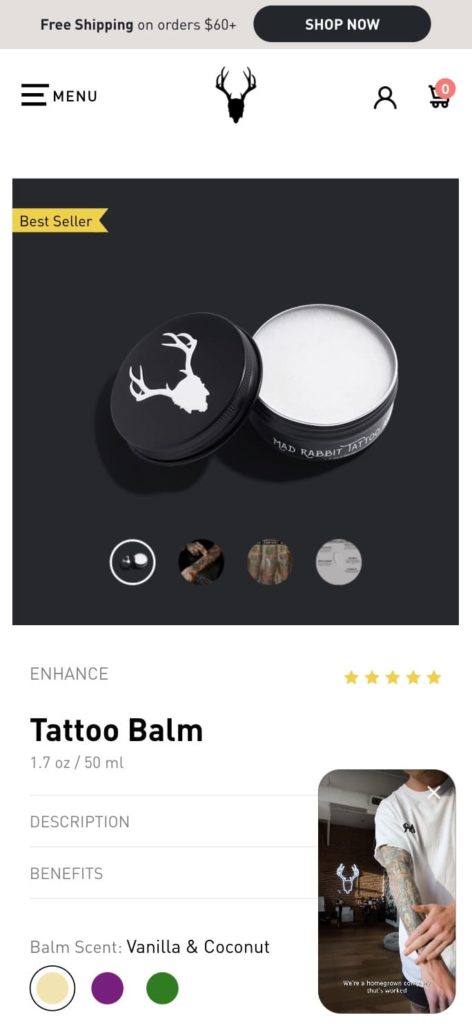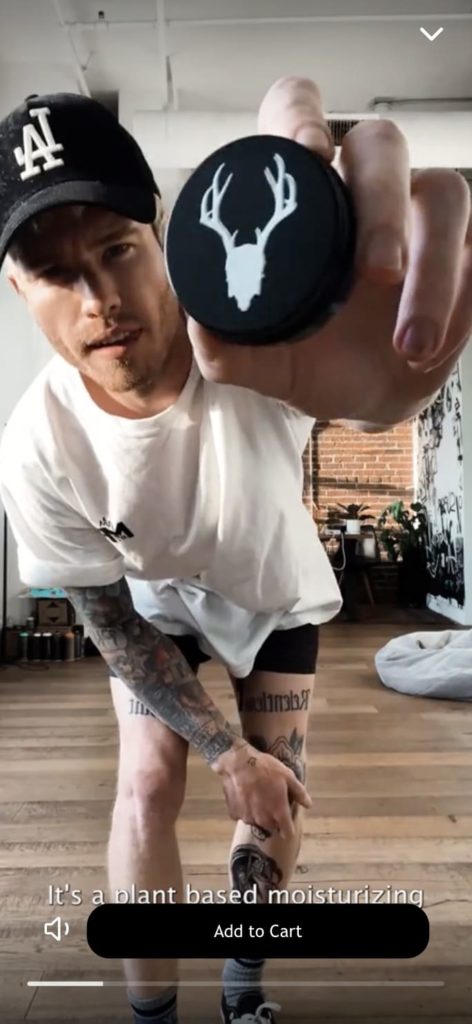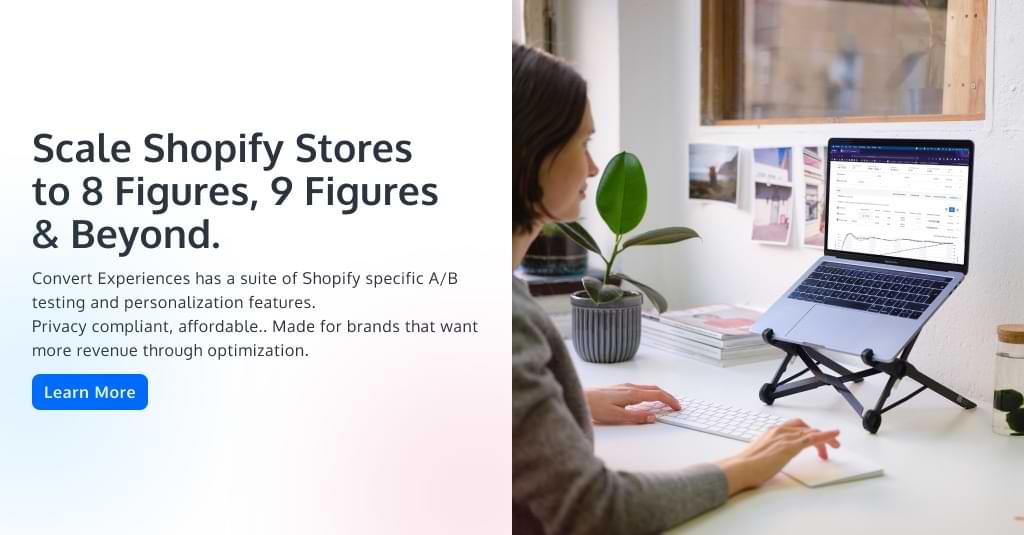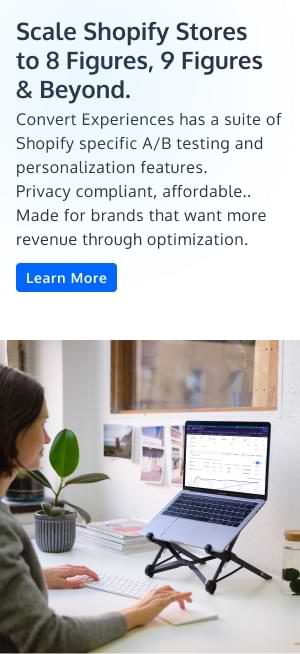A/B Testing Video on PDPs: How to Get the Most Out of Your Videos (+ Real Case Study)
For many e-commerce businesses, the product detail page (PDP) is one of the most important pages on the website. After all, this is where potential customers make the decision to add an item to their cart. As such, it’s important to ensure that the product detail page is as effective as possible and has all the necessary information to push a potential customer to buy the product.
One way to do this is through A/B testing of visuals. This can involve testing different photos, videos, or even just different color schemes. By seeing which version of the product detail page leads to more sales, you can make sure that your business is putting its best foot forward.
In today’s competitive market, every little bit counts.
What if we told you that you could increase your purchase rate and engagement (time on site) by double digits at +95% confidence levels by using video correctly on your e-commerce site?
We’ll explain how below.
Formats of Videos Worth Testing
There are a number of different ways to test videos to increase engagement and sales on an e-commerce website.
One approach is to create short-form vertical videos. This format is becoming increasingly popular, especially among younger audiences such as GenZ and Millennials (84% of them consume short-form videos), as it is more immersive and interactive than traditional horizontal videos such as YouTube or Vimeo embeds.
Social media platforms like Instagram and TikTok have widely popularized vertical video and have made most users accustomed to scrolling through feeds and taking action on items/videos that catch their eye.
Another option is to create interactive videos that allow viewers to click or tap on elements within the video to learn more about the product or service. You can also take interactive videos a step further and make them shoppable.
Shoppable videos allow site viewers to add products to cart or purchase products directly from the video. This can be a very powerful tool in e-commerce as it can reduce the total number of steps needed to checkout, which usually leads to higher purchase rates.
A tool that brings all these vertical video formats together is Viddy. Viddy makes it easy for e-commerce brands to easily embed shoppable, app-like video experiences to their websites. There are a few different vertical video formats to choose from based on what your needs are:
- Stories – this format allows a brand to have a Stories bar just like Instagram Stories on their website. The brand has full control over what videos will appear in the UI and all the videos are shoppable. Take a look at this case study to see how an antiperspirant DTC brand increased their purchase rate by 18% using Viddy Stories.
- Floating Player – this format is a picture-in-picture player that brands can load on specific pages with autoplaying videos that are all expandable into a swipeable format like TikTok. Take a look at this case study to see how a tattoo aftercare brand increased their average user session duration by 76% by adding Viddy’s Floating Players on their PDPs. More info on this later in the post.
- Carousel – this format is an inline video carousel with animated thumbnails that the user can scroll through and shop from when expanding any particular video.
- Video Landing Page (VLP) – this is a new video-first experience that autoplays a video in fullscreen mode as the page loads. Brands can add a banner, custom call-to-actions, and feature their products within the VLP. The VLP is swipeable so it gives a fully immersive feel and is optimized for vertical video. VLPs are a great way to use vertical video to feature a product in a streamlined buying experience.
Viddy has run A/B tests using Convert with 8-figure DTC brands and has proven increases in purchase conversion by up to 18% and engagement (time on site) by up to 76% at +95% confidence levels. (Check the entire case study below.)
If you’d like to give Viddy a go, please contact them here so that they know you came from Convert for special pricing!
Types of Video Content to Use on Your PDPs
Using video content is a powerful way to allow potential customers to see a brand’s products in use, which can be especially helpful for items that are difficult to explain with just pictures or text.
Video testimonials from satisfied customers can also be very persuasive (again, especially compared to just text or picture reviews).
Video reviews can also provide valuable insights into a product’s quality and performance.
It’s critical for a brand to properly set their potential buyers’ expectations upfront on what to expect with their products. Customers that have their expectations set properly when buying are the ones that have better retention and lifetime value (LTV) as they become repeat buyers.
Finally, videos that explain the benefits of a product, how it actually works, and what it looks like in use, can be extremely helpful in increasing sales. Seeing live demonstrations of products in action is one of the best ways to convince a potential buyer that it actually works.
UGC, or user-generated content, can be a powerful tool for e-commerce businesses to build social proof. UGC videos help to create a sense of authenticity and community around a product or brand. It also adds a human touch to otherwise sterile product pages, making them more engaging and relatable.
UGC can come in many forms, including reviews, ratings, photos, and videos. When used effectively, UGC can help to increase sales and conversion rates. UGC is especially effective when it comes from customers who are familiar with the product and can speak to its quality and usefulness.
Therefore, e-commerce businesses should encourage their customers to generate UGC by providing incentives such as discounts or free products. UGC can be a valuable asset for any e-commerce business, so it’s worth taking the time to cultivate it.
Where to Source Video Content
There are a number of great places to source videos for e-commerce brands.
One option is social media platforms like Instagram, Facebook, TikTok, and Snapchat. Many brands have had success using short, engaging videos on these platforms to reach new audiences.
Another option is ads. Brands can re-use ad footage that has performed well on their website.
Influencer-created videos can be particularly effective here as well, as they often come with built-in audiences that are interested in the content.
Lastly, brand ambassadors and other customers can also create videos that can be used on e-commerce sites in a UGC manner. These videos can help to give potential customers a better sense of the products and how they might be used in real life.
By sourcing videos from a variety of places, e-commerce brands can reach more people and create more engaging content.
How to Conduct a Video A/B Test on PDPs
The best way to conduct a video test on your e-commerce brand’s PDPs is to start with presence tests.
Presence tests are simple experiments with 2 variants: the first is the control without a video(s), and the second is the test variant with the video(s) you want on the product page to see its impact on performance such as engagement (time on site) and purchase rate conversion.
This is the cleanest way to make sure video is having a positive impact on your site from a metrics standpoint.
Once you have convinced yourself that the video is boosting your core metrics and KPIs with the presence test, we recommend making the variant with the videos enabled the new baseline/control.
From here, this is where things get really interesting.
Now you can start testing different types of video content against each other to see what performs best. Brands are always producing videos for a variety of use cases: ads, social posts, UGC, and on-site.
Testing these different videos on your product pages is the most data-driven way to find out which content works best for your site. This will likely depend on what your potential buyers want to see the most – do visitors get confused about how to use your product, do visitors want to understand how your product works, do visitors want to see a human review the product, etc.?
Testing will be your best friend here to find out which types of video content resonate best with your customers.
How an 8-figure DTC Brand Increased their Engagement by 76% with Video on PDPs
Mad Rabbit is an 8-figure DTC brand that specializes in tattoo aftercare products. One of their primary goals as a brand is to educate their customers on why and how they can take care of their tattoos after receiving them – this is often an area that gets overlooked.
They needed to explain to their potential buyers that tattoo care is just like skincare – it’s a routine that you need to do daily to keep it in tip top shape. They knew if they could visually show the results of using their aftercare products and explain how they work, they’d drastically increase the likelihood of site visitors buying their products.
At first, they tried explaining how their products work with details of the ingredients, how they are sourced, and what each of them specifically does with text and images. They placed this info below the main fold on the PDP as they didn’t want to distract users from the core ‘add to cart’ functionality on the top portion of the PDP.
One of the downsides of putting this info lower on the PDP is that many users will miss it if they aren’t engaged enough to scroll down on the page.
All in all, Mad Rabbit found that text and image explainers weren’t too impactful on their key metric of engagement (average user session duration).
They also tried what everyone in e-commerce does, adding text reviews. Unfortunately, text reviews are not as impactful as they used to be because they are so commonplace now. People expect to see a minimum of hundreds to thousands of reviews per product and at least 4.5 stars on them. It’s when this isn’t present that a potential buyer sees a red flag on the product.
Mad Rabbit was aware of this and figured video reviews and explainers could be more impactful than text, which is what led them to testing video. They wanted a way to place video as high as possible on the PDP to make sure it had high exposure to their visitors. They also knew the more interactive a video would be, the more engaging it would be.
Mad Rabbit has a huge TikTok and Instagram following (465k and 277k, respectively) so they knew the power of vertical videos that are both autoplaying and swipeable to give an immersive feel to the shopper.
Mad Rabbit conducted an A/B test with Viddy’s Floating Player on their hero product’s PDP.
The floating video player was configured to load on the initial viewport of the PDP so all users going to the page would see it without having to scroll down. Mad Rabbit decided to use Viddy because of their interactive and shoppable capabilities as well as the app-like feel of their vertical video player. Viddy’s floating player is expandable into a full screen mode that the user can scrub through and ultimately shop from via an ‘Add To Cart’ button within the video itself.
Take a look at the experience on their Tattoo Balm’s PDP below.
The first screenshot shows Viddy’s Floating Player on the bottom right of the PDP on page load.
The screenshot shows Viddy’s expanded player view that is triggered when a user clicks on the Floating Player. Here you can see the video is vertically optimized, scrubbable, and has a shoppable ‘Add to Cart’ button within it which helps push conversion.
The A/B test here consisted of a 50/50 traffic split of showing Viddy’s Floating Player vs. not showing it.
The Viddy-enabled variant outperformed by lifting engagement (average user session duration) by 76%!
Purchase rate conversion was increased by 8% on this test.
After the success of this test, Mad Rabbit started showing the Floating Player to 100% of traffic on this PDP and started employing Viddy’s shoppable floating player on their other PDPs.
Final Thoughts
Adding vertical video to PDPs is an effective way to increase sales in e-commerce due to more engaging content and better education on products (seeing them in use, how they work, how to use them, seeing the benefits, etc.).
There are many ways to source these types of videos. User-generated content (UGC) is a great way to get vertical videos that feel authentic and trustworthy. UGC can be sourced from social media, existing ad footage, or even directly from customers or influencers.
A/B testing different types of video content is the best way to find out what works best for your audience. After all, the type of content that performs best for your brand will depend on what your brand needs to communicate to your customers.
Written By
Harris Gani
Edited By
Carmen Apostu




